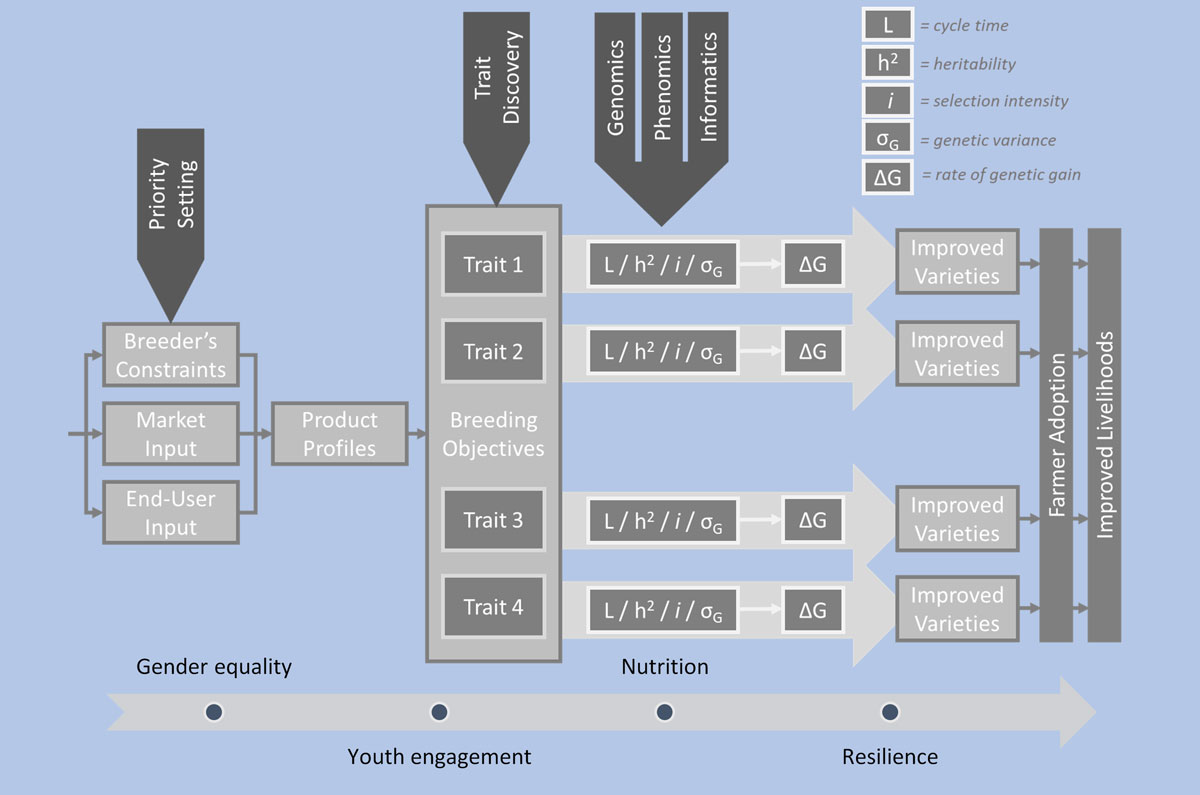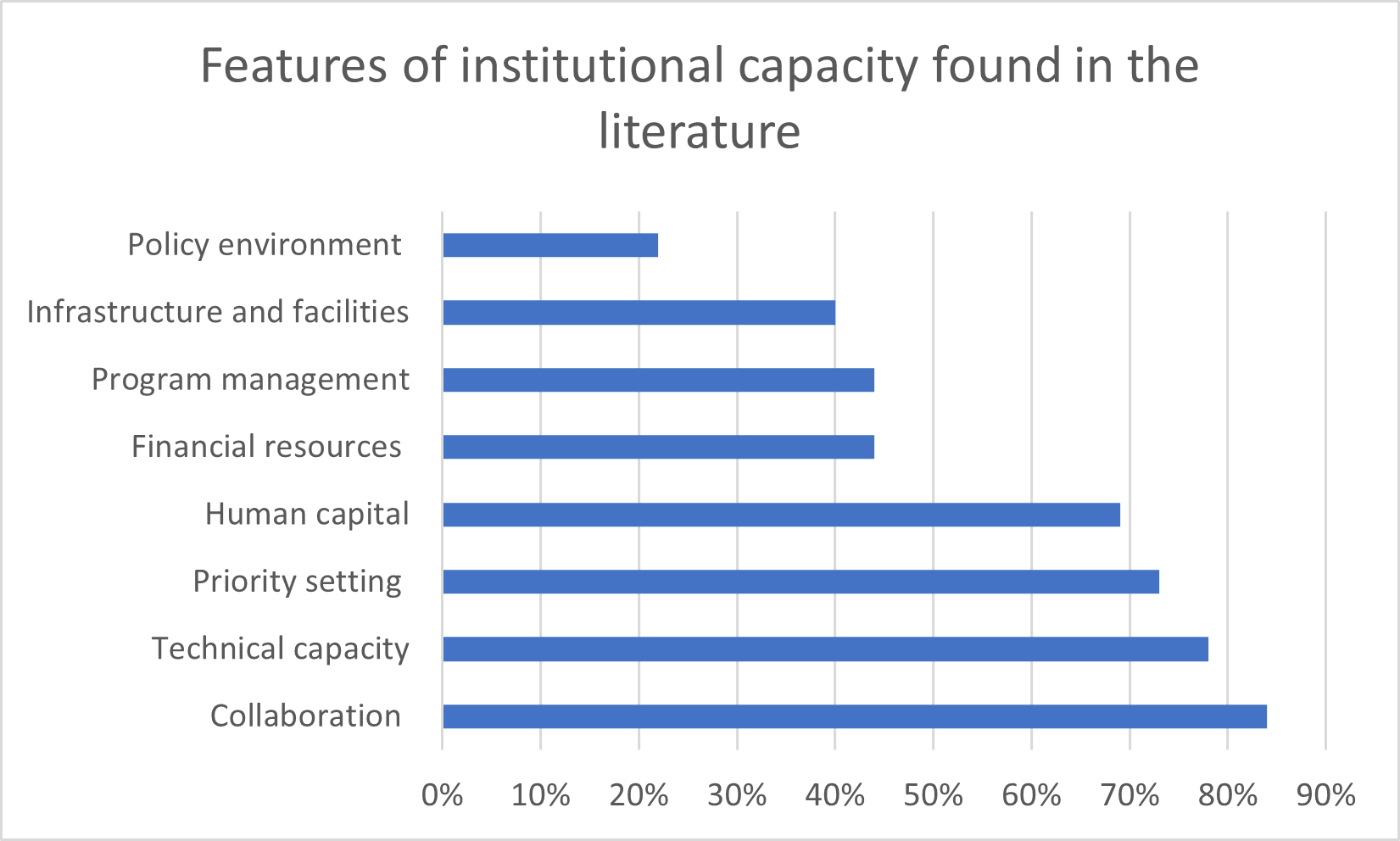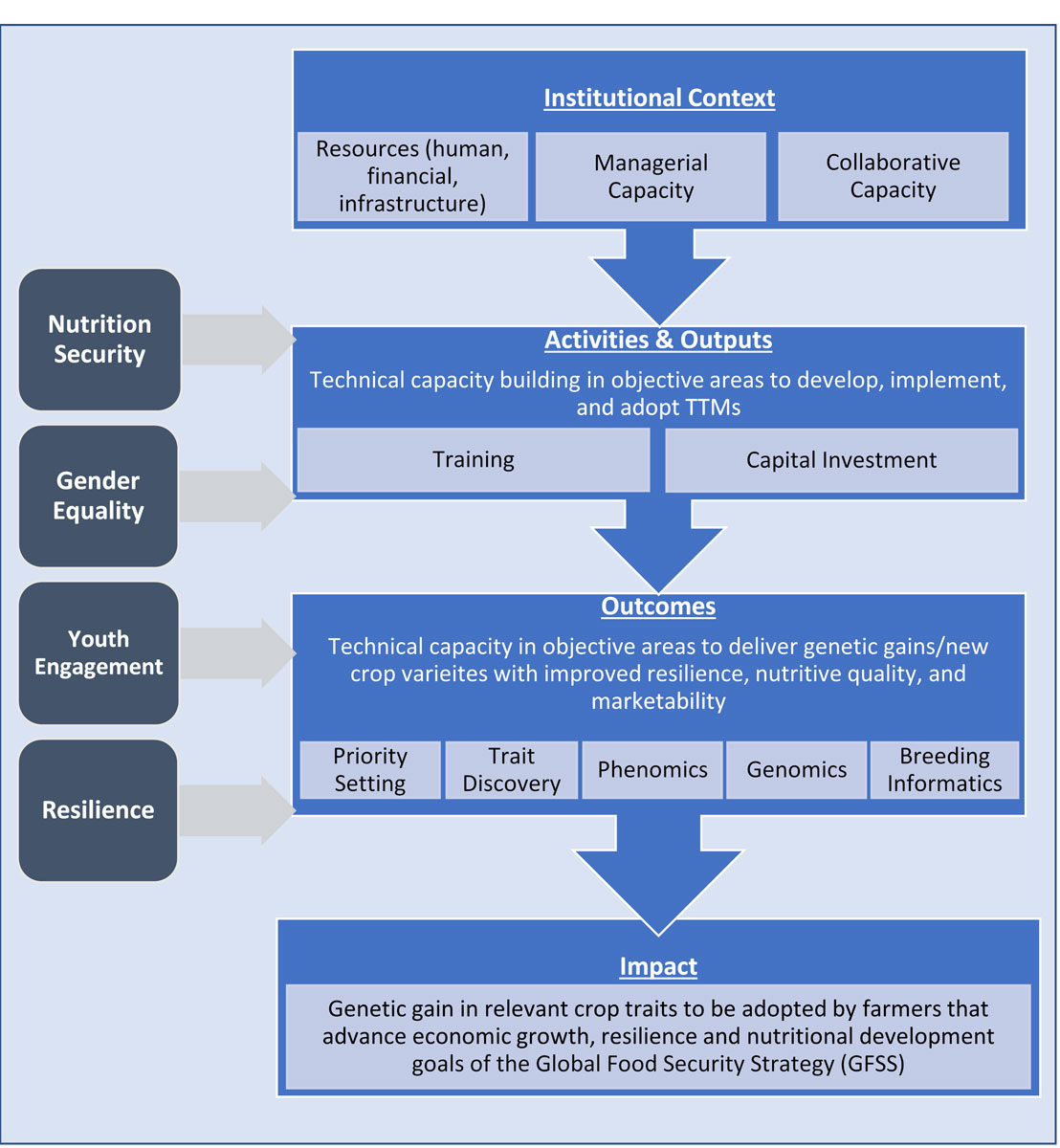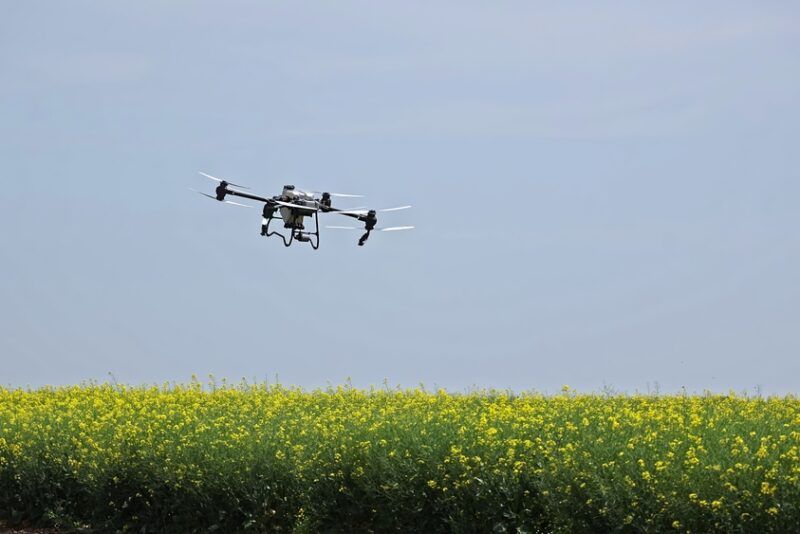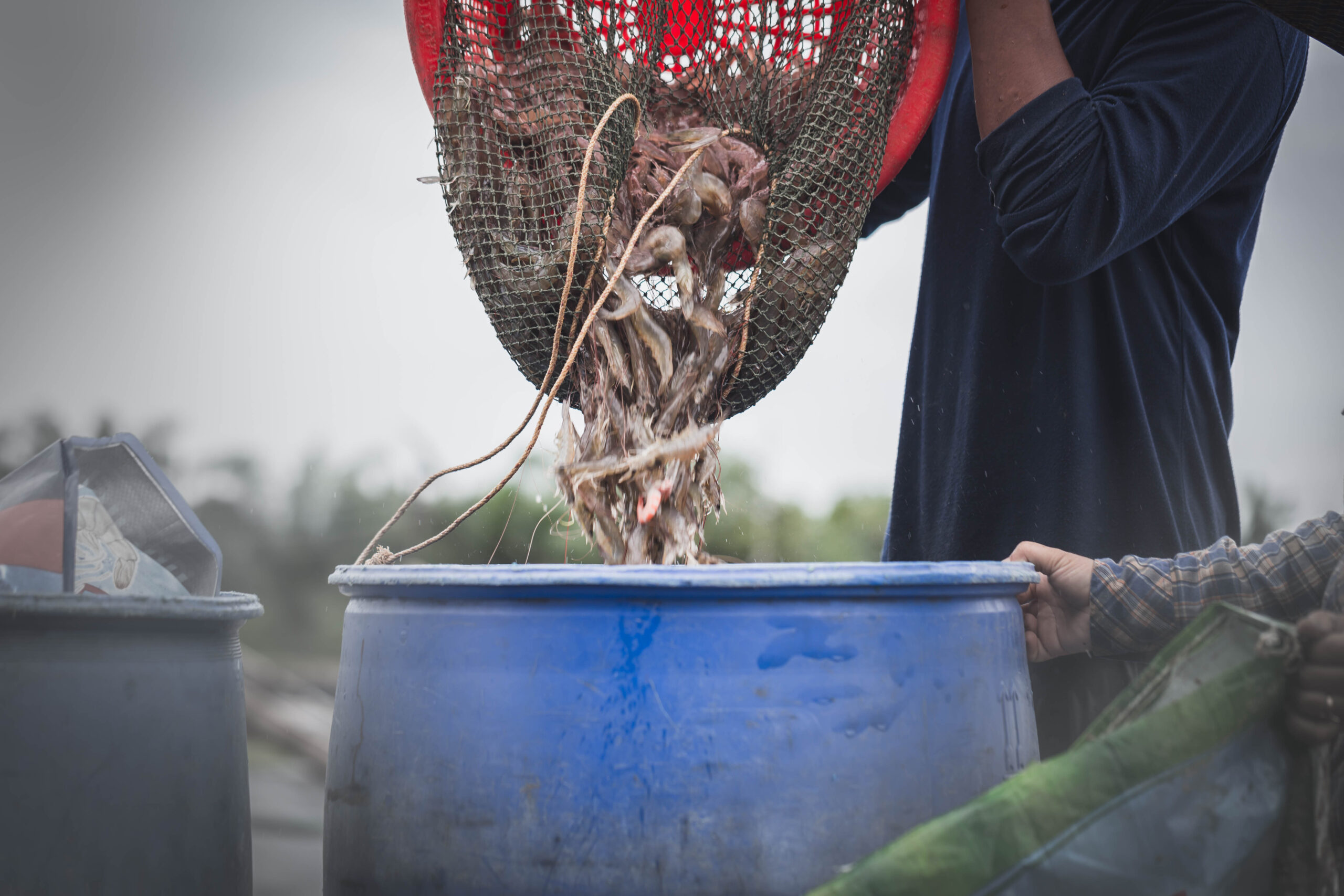Developing a Conceptual Framework to Measure Institutional Capacity
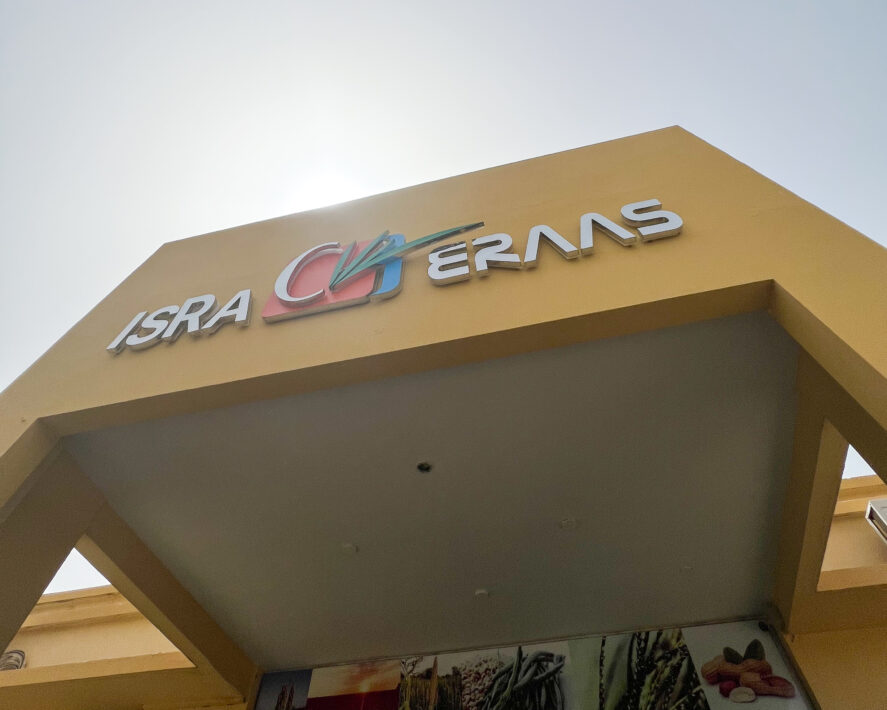
Public plant breeding programs play a central role in tackling local food security challenges around the world, but how can we be sure that they are operating effectively and optimally at the institutional level? In this blog series, the Feed the Future Innovation Lab for Crop Improvement’s (ILCI) institutional capacity team explores how they came to define and measure institutional capacity at National Agricultural Research Institutes (NARIs) — something that has never been done before.
Based at the Tata-Cornell Institute, the team works with ILCI Centers of Innovation at NARIs in Costa Rica, Haiti, Malawi, Senegal, and Uganda to reveal constraints, bottlenecks, and challenges of technology development and diffusion. Their goal is to improve the ability of public crop improvement programs to respond to dynamic food system needs, thereby boosting farm productivity, incomes, and nutrition.
Follow the series:
- Improved public sector plant breeding for food security
- Institutional capacity conceptual framework (Current post)
- Institutional capacity measurements (Coming soon)
- Institutional capacity index (Coming soon)
Why measure institutional capacity?
This blog is the second part of the series that explores the research conducted by the ILCI institutional capacity team. In the first post, we discussed institutional capacity and why it is vital to expand our understanding of the term to track the development of international crop breeding programs. The overarching objective of all breeding programs, particularly in the developing world, is to deliver improved crop varieties to farms and communities that positively affect consumer well-being and the socioeconomic status of the producer. Genetic gain, or the increase in trait performance over time, is an essential indicator of program effectiveness and is a principal goal in most breeding programs. While genetic gain is observed (and often measured) at the lab level, adoption of improved varieties at the farm level, referred to as farm-level genetic gain, is often overlooked. There is a wide gap in our understanding between varietal releases by breeding programs and their adoption by farmers, primarily modulated by seed distribution and marketing systems, as well as a range of consumer traditions and preferences.
A public sector breeding program’s capacity must take into account how breeding programs increase genetic gain and enable varietal releases aligned with a region’s food security challenges and socioeconomic needs marks. ILCI proposes to strengthen the capacity of NARIs to deliver genetic gain through scientific partnerships in six objective areas:
- Priority setting
- Trait discovery
- Phenomics
- Genomics
- Breeding informatics
- Cross-cutting themes (gender equality, youth engagement, nutrition and resilience)
The ILCI impact pathway assumes that genetic gain is a function of a program’s ability to identify target user needs and adopt and implement state-of-the-art technologies, tools, and methods (TTMs) for timely release of relevant crop varieties, which enhances the impact of the breeding program for target geographies and populations (Figure 1).
ILCI’s philosophy suggests that if the target population’s needs are optimally understood through effective priority-setting and cross-cutting theme integration, varieties will be adopted effectively, thereby meeting its intended aim.
Efforts to measure institutional capacity: a review of relevant literature
While assumptions of lab-to-farm genetic gains have a logical underpinning, confidence in these relationships must be reinforced by carefully synthesizing evidence from previous global crop improvement efforts. On the international stage, there is no sufficient understanding of how the various drivers of genetic gain are contextualized within and fostered by institutional processes. Therefore, the institutional capacity team is making a concerted effort to define institutional capacity in the context of crop improvement, linking breeding program capacity to the delivery of sufficient and appropriate genetic gains.
We conducted a scoping literature review to compile and interpret evidence defining institutional capacity and contextualizing the ILCI objective areas within the capacity of breeding programs. The intent was to systematically synthesize reported evidence into a conceptual framework representing the defining characteristics of building capacity in innovative institutions. We use this framework to critically examine the six ILCI objective areas, ultimately drawing conclusions about how innovations in these areas can be measured to contribute to institutional capacity building (these results will be presented in subsequent blogs in this series).
What is the evidence around institutional capacity measurement?
The scoping review included 45 studies that define, measure, provide a framework, or critique the performance or capacity of breeding in agricultural research. The literature frequently described institutional capacity as human capital, collaboration, and program execution. The analysis revealed that no comprehensive or standardized definition or framework of institutional capacity exists in the literature. However, key themes emerge that can serve as components and indicators of institutional capacity (Figure 2):
- Collaboration
- Technical ability to conduct breeding activities
- Setting priorities that account for diverse stakeholder needs and environmental variability
- Human capital
- Funding
- Program management
- Infrastructure
- Access to technology and genetic resources
- Enabling policies
The studies frequently highlighted the development of improved crop varieties, varietal adoption by farmers, enhancement of program efficiency, and crop productivity as critical outcomes of plant breeding research. The most referenced impacts include enhanced agricultural production, economic growth, and food security.
Considering the themes mentioned above, we came to define the institutional capacity of agricultural research in crop improvement as: the ability to make use of resources (e.g., human capital, infrastructure, and financial resources), management structures, and collaborations to innovate and implement sustained crop improvement research effectively and efficiently. The result of crop improvement innovation is to deliver genetic gain and produce appropriate enhanced crop varieties leading to farm-level adoption to meet the country’s current and future food and nutritional security challenges.
A framework for measuring institutional capacity
The literature review results were analyzed and integrated within the context of the ILCI project to construct a conceptual framework for capacity (Figure 3). ILCI seeks to identify, develop, pilot, and transfer appropriate TTMs to breeding programs in regional collaborative NARI networks.
The fundamental enabling conditions for building institutional capacity are the development of good management, stable resources, and collaborations. These represent the institutional context, or drivers of capacity, as they are a requirement for the successful deployment of TTMs. NARIs that collaborate with the private sector, civil society organizations, government, research institutions, and value chain actors allow for identifying food system priorities to guide research while enabling information and technology spillovers. Embedded in all components of capacity in the framework are cross-cutting themes that are critical to building research competence and leadership, reducing inequality, and ensuring that crop improvement benefits all stakeholders in the agricultural value chain.
ILCI is conducting activities in the form of training and capital investment to develop, implement, and adopt TTMs to build capacity in the objective areas, as measured by the number of trainings, level of TTM adoption, and amount of investment in crop improvement research. Outcomes include the measurable change in capacity in objective areas and the delivery of genetic gains in new crop varieties with improved resilience, nutritional quality, and marketability.
Using this conceptual model, our team developed a survey tool to measure the institutional context of various breeding programs across different institutions. In the next blog, we will discuss how this measurement tool compares with existing tools and explore the metrics and indicators of capacity developed from the research process to track capacity building in NARI breeding programs as a result of ILCI project activities.
This article was written by Mathew Abraham and Sage Grasso-Monroe. Learn more about their work with the Innovation Lab for Crop Improvement institutional capacity team.
Featured image: The Regional Center of Excellence on Dry Cereals and Associated Crops of the Senegalese Institute of Agricultural Research (ISRA/CERAAS) is one of the NARIs working with ILCI. (Photo provided by ILCI)


